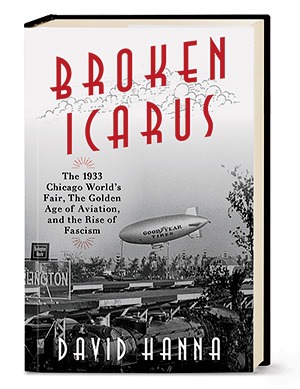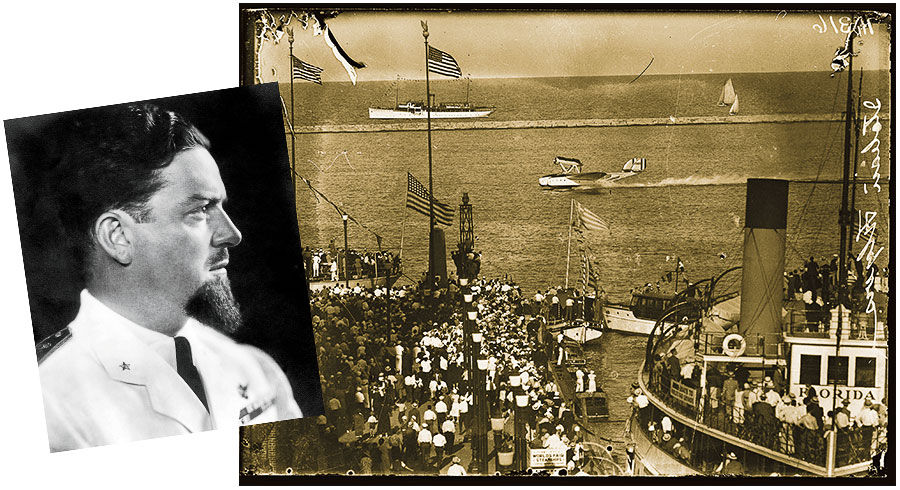
1. The exposition entertained an infamous guest. John Dillinger, despite being sought by law enforcement officers for his bank robberies, was a frequent visitor to the fairgrounds. “[He melted] into the relative anonymity afforded by the large crowds,” writes David Hanna in Broken Icarus: The 1933 Chicago World’s Fair, the Golden Age of Aviation, and the Rise of Fascism (out June 15). Dillinger’s favorite attraction was the Sky Ride, a cable car jaunt 628 feet above a lagoon between two towers.
2. The lack of site relics was by design. There is no opportunity to walk through the preserved 1933 world’s fair, which was held on present-day Northerly Island and embraced the aesthetics later to be called art deco and art moderne. Every structure was created with the plan that it would be dismantled. No matter that some buildings, like the Hall of Science, which featured relief sculptures etched into its pylons, were works of art themselves. “Keep in mind that this ‘temporaryness’ was the very reason why these structures with their various works of art were so extraordinary,” writes Hanna. It allowed organizers to take risks and was “the cost of greatness.”
3. Chicago made a hero out of a fascist. The city was awed when the Italian minister of the air force, Italo Balbo, landed seaplanes on Lake Michigan. Despite his support of fascist leader Benito Mussolini, Balbo received a key to the city, had a street named after him, was made a chief by the Sioux people’s Chief Blackhorn, and was guest of honor at a Drake Hotel gala — the epitome of high society. “With the possible exception of the fictional Ferris Bueller, Chicago has probably never come out so spontaneously and affectionately for any single individual,” Hanna writes.
4. German Americans supported Jews. Two weeks before the fair, 50,000 people rallied to demand Joseph Goebbels, Nazi propagandist, not be welcomed as Germany’s representative. The Nazi flag was never flown at German American events.
5. A local composer shattered ceilings. The CSO became the first major orchestra to perform a composition by a Black woman: Florence Price’s Symphony No. 1. It explores the Black experience: sorrow, struggle, liberation, joy. “Price’s story is surely one of the highlights of a great fair,” muses Hanna.




